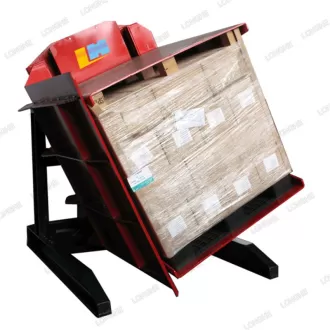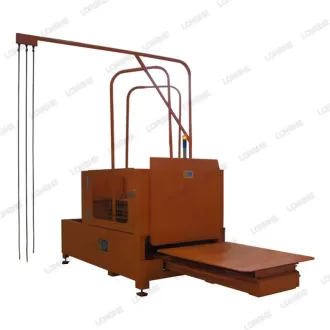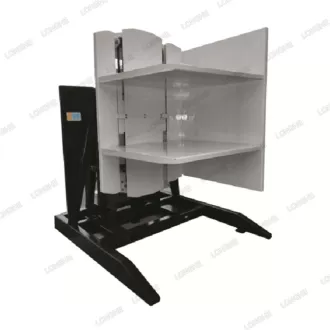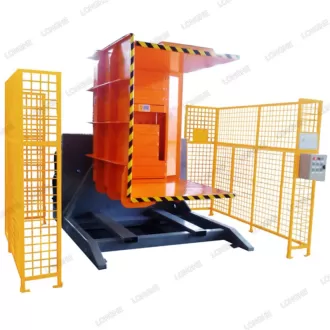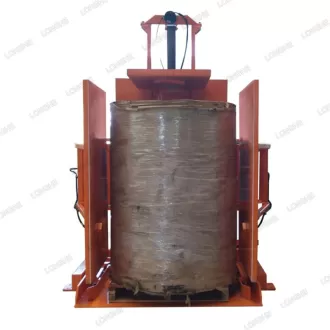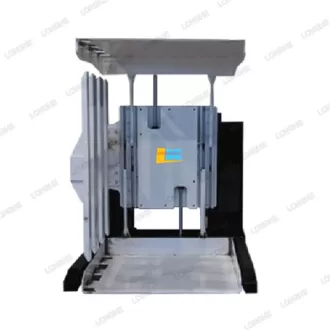Pallet inverters, along with similar solutions like upender inverters, are specialized machines designed for the easy and swift rotation or repositioning of fully loaded pallets, heavy items, and stacks of materials. These devices contribute to increased efficiency, minimized product damage, and a safer work environment by eliminating the manual handling, moving, or stacking of heavy items. Available in various sizes with different load capacities, pallet inverters offer a safer and more efficient alternative for handling pallets compared to traditional methods involving fork trucks, overhead cranes, and other challenging heavy lifting equipment.
In this overview, we will delve into the features of pallet inverters, their advantages and applications, and key considerations when selecting an inverter for your operational needs.
What is a Pallet Inverter?
Pallet inverters are equipped with a distinctive pallet-gripping system that enables secure inversion or transfer of pallets, whether loaded with products or empty. In comparison to alternative heavy lifting equipment, these machines offer ease of operation and seamless integration with diverse warehouse equipment and production lines. Most inverters can be operated manually as standalone units or seamlessly integrated into larger automation sequences. Their primary applications include:
- Replacing damaged pallets
- Accessing and removing damaged items at the bottom of a full load
- Repositioning fully loaded pallets within a warehouse
- Moving or manipulating heavy, bulky items or stacks of products
The specific operating sequence of an inverter is contingent on its configuration and design features. The Upender Pallet Inverter provides a fully-automated solution for various material handling applications, incorporating a built-in conveyor and feed conveyor. The operational steps are as follows:
1. The load is placed or fed onto the feed conveyor leading to the pallet inverter.
2. Initiating the feed conveyor with a push-button control, the load is fed into the inverter. A sensor beneath the rollers detects the entering load, automatically activating the built-in conveyors.
3. Once the load is guided into the inverter, the built-in conveyors cease operation. The hydraulically operated clamping mechanism then closes, applying sufficient pressure to securely hold the load within the unit.
4. The unit rotates the secured load to 180 degrees. Subsequently, the clamping mechanism automatically opens, and the load exits the inverter through the built-in conveyor.
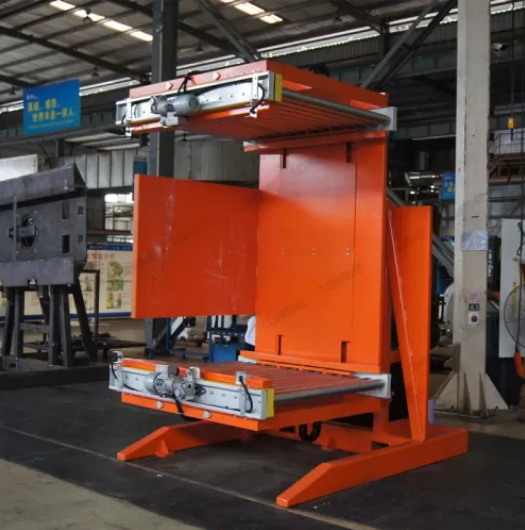
Advantages of Pallet Inverters
By streamlining and expediting the pallet-handling process, inverters offer companies several advantages:
1. Improved Efficiency: Pallet inverters, with their adaptable designs and functionalities, seamlessly integrate into existing material handling operations. They efficiently execute repetitive and labor-intensive tasks such as lifting, moving, and reorienting heavy loads, saving time and optimizing employee productivity. In addition, they simplify the retrieval of damaged goods by allowing easy access to items at the bottom of pallets, eliminating the need to manually unstack and restack the entire load.
2. Cost Savings: Manual rotation or repositioning of large, heavy loads often leads to unintended product damage and increases the risk of employee strain or injury. Inverters automate these tasks, reducing production interruptions and cutting costs associated with damaged items and manual labor.
3. Enhanced Safety: By eliminating the necessity for manual lifting or rotation of heavy loads, pallet inverters contribute to a safer and healthier work environment. This helps reduce the incidence of employee injuries, fostering a safer workplace.
5. Prevention of Equipment Misuse: Utilizing a forklift or overhead crane to sling and overturn a heavy or awkward item can lead to side-loading of hoists, unbalanced loading, and other unsafe conditions. Pallet inverters eliminate these hazards, preventing improper use of equipment and ensuring a safer working environment.
How to Use Pallet Inverters
Pallet inverters play a crucial role in optimizing warehouse space through various material handling tasks, including:
1. Efficient Recovery of Damaged Items: Pallet inverters facilitate the swift retrieval of damaged items located at the bottom of a load, eliminating the need for manual restacking. These machines are also effective in removing and replacing broken pallets without disrupting the product stack.
2. Pallet Swapping: In industries with stringent sanitary standards, such as food and pharmaceuticals, wood pallets may carry contaminants from previous uses. Pallet inverters enable quick and efficient pallet exchanges, allowing dock crews to transfer goods from wood shipping pallets to hygienic plastic pallets for storage in clean rooms or other sanitary spaces. Conversely, inverters can transfer items from premium storage pallets to more economical shipping pallets for distribution purposes.
3. Rotating Large Products: Pallet inverters showcase versatility beyond handling pallets, proving valuable in rotating large and unwieldy items that are challenging to invert manually. This capability is particularly beneficial in operations requiring a change in the product's orientation for subsequent processing, such as in metal casting and foundry work, steel stamping, or the handling of rolls.
4. Rotating Large Stacks of Material: In addition to pallets and sizable items, pallet inverters are adept at rotating substantial stacks of material, including sheets, paperboards, or products in laminated manufacturing. This efficient process saves time and labor, enabling operators to invert the entire stack as a cohesive unit rather than individually rotating each item.
How to Choose the Right Pallet Inverter for Your Application
Selecting the most suitable pallet inverter for your operation involves careful consideration of several key factors:
1. Load Sizes: Evaluate the weight and dimensions of the loads handled in your operation. Determine the ideal inverter height range by adding a minimum of five inches to your largest pallet load. A pallet inverter with a standard height range is suitable for consistently sized and weighted loads.
2. Load Variety: If your operation involves handling loads with diverse weights and dimensions, opt for an inverter with a larger clamp range. This ensures the accommodation of larger, as well as small or partial, loads.
3. Product Type: Consider the durability or fragility of the products being handled. For delicate items, choose an inverter with adjustable clamp pressure settings to ensure appropriate handling.
4. Daily Product Volume: Assess the daily usage requirements of the inverter. For high-volume operations such as major manufacturers or distributors, a heavy-duty inverter is essential for efficiently handling large product volumes. Smaller-scale operations with lighter loads may find a low-duty inverter more economical.
5. Loading Process: Ensure the chosen pallet inverter aligns with your facility's space requirements and seamlessly integrates into existing processes. Some inverters function as manually-operated, stand-alone machines, while others come equipped with conveyors and additional features for integration into automated production lines.




